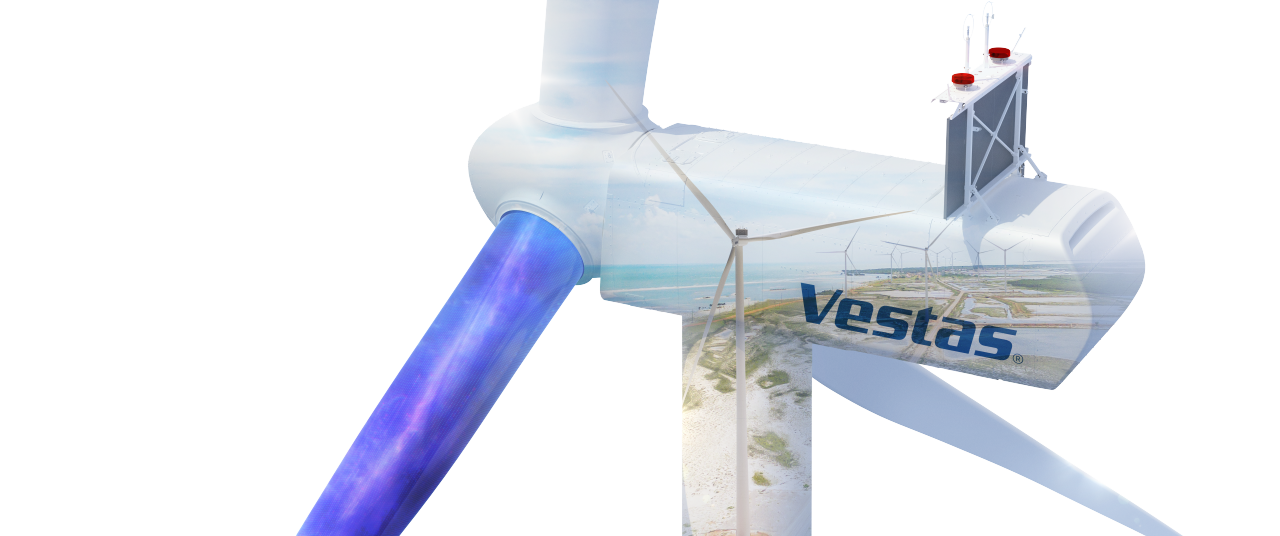To expand renewable energy, we need to design for scale
Energy transition
Anders Nielsen
Executive Vice President and Group CTO
Published on 16th of May 2022

In order to meet global climate goals, wind energy must significantly expand its presence across the global energy system. To limit global carbon emissions in line with the Paris Agreement, annual capacity additions will need to increase by an average of 18 percent per year over the coming decade. And this rate of growth would be a huge step forward from today. The installed capacity of wind power grew just seven percent in 2021, and is forecast to grow by just eight percent this year. To reach net-zero, the wind industry must be ready to build scale, and fast.
Political momentum around wind energy is rapidly accelerating, with national commitments to significantly increase the share of renewable-generated power all over the world. The level of ambition from governments globally signals significant increase in demand for wind power. And to address this, wind technology must be able to support a wide range of business cases, ready to be deployed quickly and efficiently.
Technological innovation over the past 40 years has brought wind energy to become one of the most cost-competitive power sources in the world, yet as demand grows, and the expectations of power providers evolve, the wind industry still has a long journey ahead. As an industry, we still operate a footprint that is a fraction of the size of those commanded by traditional energy sources. As our technology has matured, so must our approach to industrialisation.
Vestas is dedicated to deliver the needed solutions and the expansion of the Vestas’ 4 MW platform marks a turning point in this journey. The new V163-4.5 MW™ demonstrates that the technologies required to expand renewable energy are in place, and ready to be deployed at scale. Building on our most installed wind turbine platform that has yielded some of Vestas’ most highly installed turbine models, the new variant marks a huge step forward towards increasing energy production at wind park level and optimising predictability in wind power generation. And by designing for scalability, it can be deployed with a minimal impact on Vestas’ existing value chain.
The turbine is designed with a larger swept area, which combined with a larger rotor-size-to-rating ratio, enables the ability to capture energy from the wind more efficiently at lower wind speeds. This capability increases the capacity factor and reduces variability in production, leading to a higher annual energy production (AEP) across the wind park. The combination of increased AEP and reduced variability signals a far more attractive business case for asset owners.
By increasing business case certainty and offering a more stable power output at medium to low wind speeds, the new variant also signals an expanded addressable market. In the USA for example, where renewable targets are ambitious and installed capacity has big growth potential, the possibility of stable power production across a broader geographic area can help accelerate the journey towards a zero-carbon future.
To meet this level of demand, however, technology providers like Vestas must carve out pathways towards scalable production, construction and service. The V163-4.5 MW™ has been designed to fully leverage Vestas’ existing footprint, with minimal impacts to our current transport, construction and service infrastructure. Besides the larger rotor, the V163-4.5 MW™ shares most major functional and physical designs across modules with the V150-4.5 MW™. This marks an evolutionary step forward in turbine design, supporting efficient execution and delivering business case certainty for the customer. It’s an approach that can help us unlock a new era of scalable production, and maturity for the wind industry.
Beyond an optimised value chain, exploring new roads towards increased profitability is critical for the future of wind energy. A successful energy transition will rely on technology providers like Vestas to capture enough value to keep reinvesting in innovation. The new generation of the 4 MW platform poses important possibilities in this journey towards sustainable profitability.
For Vestas, and our many colleagues working around the world in technological development it is a clear ambition to deliver solutions that can expand the presence of wind energy and be the driving force behind the energy transition. At Vestas, we believe we have taken an important step forward with the V163-4.5 MW™, and we invite our partners to join us in this journey.